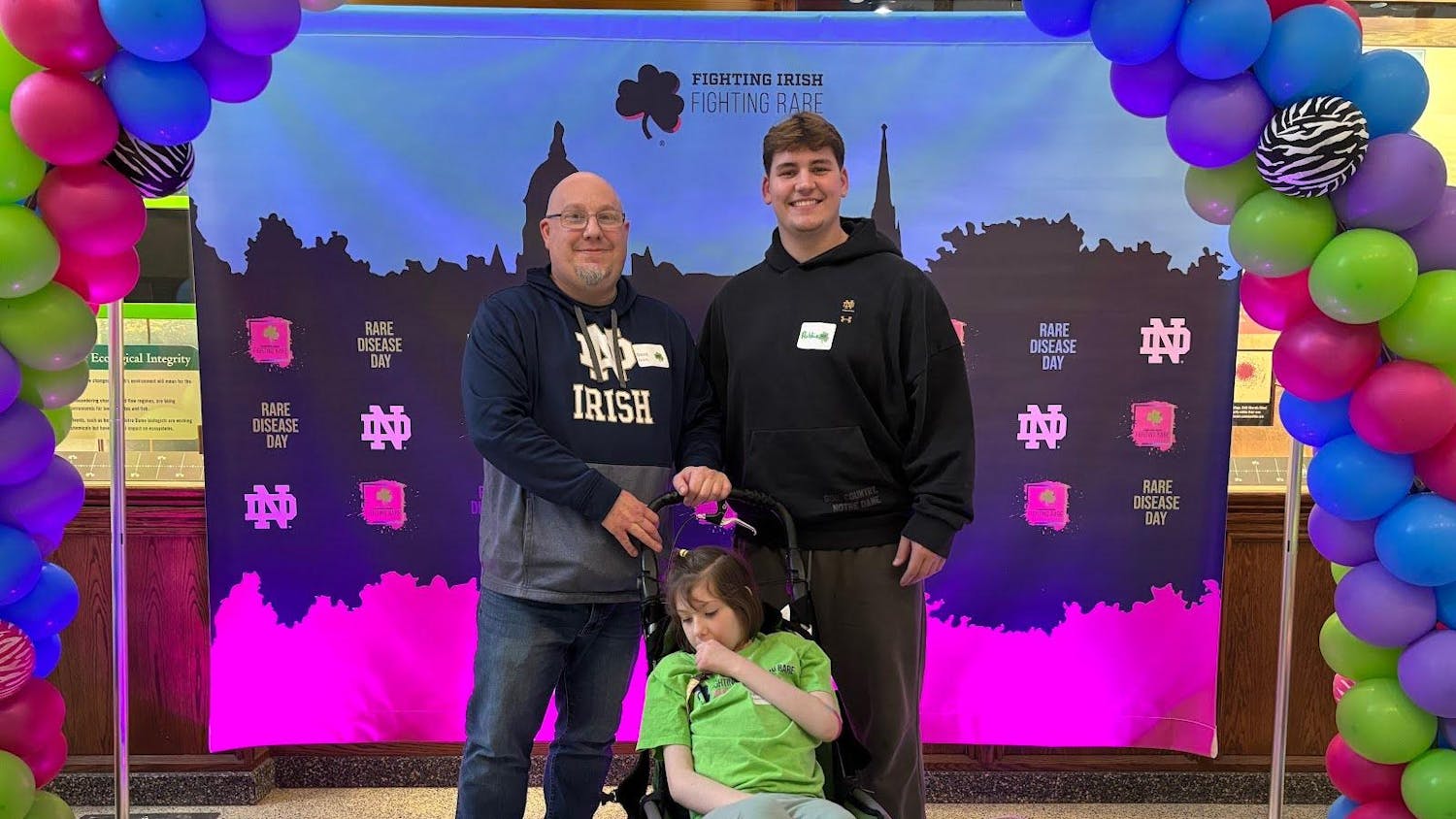"It was like running a gauntlet, every single day."
Jeanine Sterling, a 1976 alumna and member of the first fully coeducated Notre Dame freshman class, dealt with the impact of gender integration at the University firsthand.
"We were very young, so the bombardment of mixed messages the girls received was very disconcerting," Sterling said. "On one hand, we were treated as someone very special ... but then the reporters and the cameras left town and the banner went down and then reality hit."
Sterling spoke at the Eck Visitor Center Thursday in a panel discussion titled "Paving the Way: Reflections on the Early Years of Coeducation at Notre Dame," commemorating the 40th anniversary of coeducation at the University.
The panel, sponsored by the Cushwa Center for the Study of American Catholicism, opened with a recorded comment from University President Emeritus Fr. Ted Hesburgh, who commended all involved in the coeducation process.
"This was a great male bastion and no one thought it could possibly assimilate women," Hesburgh said. "I'm just delighted that we are a better university, better Catholic university, better modern university because we have women as well as men in the mix."
Dr. Susan Poulson, history professor at the University of Scranton and co-editor of "Going Coed: Women's Experiences in Formerly Men's Colleges and Universities, 1950 - 2000," began the discussion by presenting findings from her research exploring women's experiences of coeducation.
Fr. Thomas Blantz, professor of history and former vice president of student affairs, said the University began coeducation by admitting 325 undergraduate women in the fall of 1972, after a failed merger with Saint Mary's College.
Kathleen Cekanski-Farrand, attorney for the South Bend City Council for 38 years, previously served as rector of Badin and Breen-Phillips Halls while teaching law during the early years of coeducation. She said she appreciated the work of prominent University figures like Fr. Blantz and Fr. Hesburgh to provide support for female students.
"The one thing that we all talked about was the lack of role models in the dorm," she said. "I can remember Fr. Ted saying very vividly that the best role model is on top of the golden dome."
The panelists who experienced coeducation as undergraduate students shared their personal experiences of the integration of women at Notre Dame.
Sterling said life as the new minority on campus was difficult to swallow.
"Suddenly you're the only girl in a classroom full of 30, you have upperclassmen telling you that you're not welcome at Notre Dame, you hear a lot of alumni are angry, there are guys in South Dining Hall waving score cards rating your looks," she said. "On that first football Saturday, a crowd of alumni stood silently watching each of us emerge to go to breakfast."
Double Domer Ann Therese Darin, an attorney and journalist, was The Observer's first female news editor and received the Sigma Delta Chi award for her reporting on Notre Dame coeducation. Darin also authored the book "Thanking Father Ted: Thirty-Five Years of Notre Dame Coeducation," which is distributed to all female undergraduates upon entering the University.
During the earliest days of coeducation, Darin said "weird things happened."
"One of my best friends was kicked out of a required class for her government major repeatedly ... because the professor said he had never taught a woman and he wasn't going to start," she said. "For two weeks, all that she did was bounce between Dean Waddick's office and the class like a ping-pong ball and finally, she couldn't take it anymore."
Darin said her friend's brother advised her to work for the top grade in the class on the first quiz so the professor would stop dismissing her from class.
"She ended up getting the top grade in the class in the spring. Amazingly, she wasn't the only one of my classmates to experience this," she said.
Humor was the only antidote to the unfair treatment, Darin said.
"A sense of humor went a long way, particularly when you were called in class and the professor said 'Mr.!' and he was talking to you, or asked for the 'woman's point of view' and was looking directly at you," she said.
Darin said women worked hard to assimilate into mainstream, masculine Notre Dame culture.
"One of the basic ways to fit in, when you were one out of 20, was to dress like guys," Darin said. "To dress like a woman at any time other than a football weekend was just inviting trouble."
Dan Reagan, a 1976 alumnus and former associate vice president for University Relations, said he was ecstatic to be a member of the first coeducated class, but many of his classmates were not prepared for the maturity of the 125 women.
"The boys ... seemed to fall into three categories: the percentage that felt women had taken their space ... the little larger percentage were ready to strut their stuff and sweep you off your feet ... the third group ... was a bit oblivious, was more concerned with just plain being guys," Reagan said. "We Notre Dame men knew that the Notre Dame women were smart ... more prepared, definitely more mature ...We were intimidated."
The intimidation factor set the tone for awkward gender relations, Reagan said.
"What do large groups of intimidated males do? They try to be funny, try to take advantage of large numbers, they lose sight of decorum," he said. "The groupthink would take over, especially in those early years."
Reagan said the precedent set by the first group of brave women continues to pay dividends today.
"You have changed the place its people, maybe in ways you don't think about," he said. "I guarantee as we raised our daughters we had you in mind as the role models: strong, faithful, smart, loyal ... You prepared us to be fathers to the future women of Notre Dame, and you need to be thanked for that."
Contact Nicole Michels at nmichels@nd.edu









